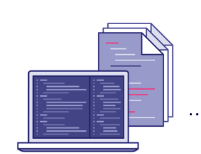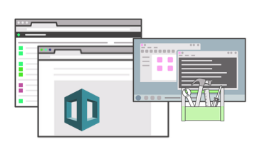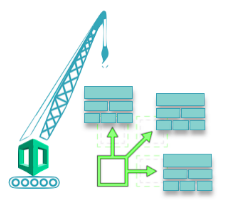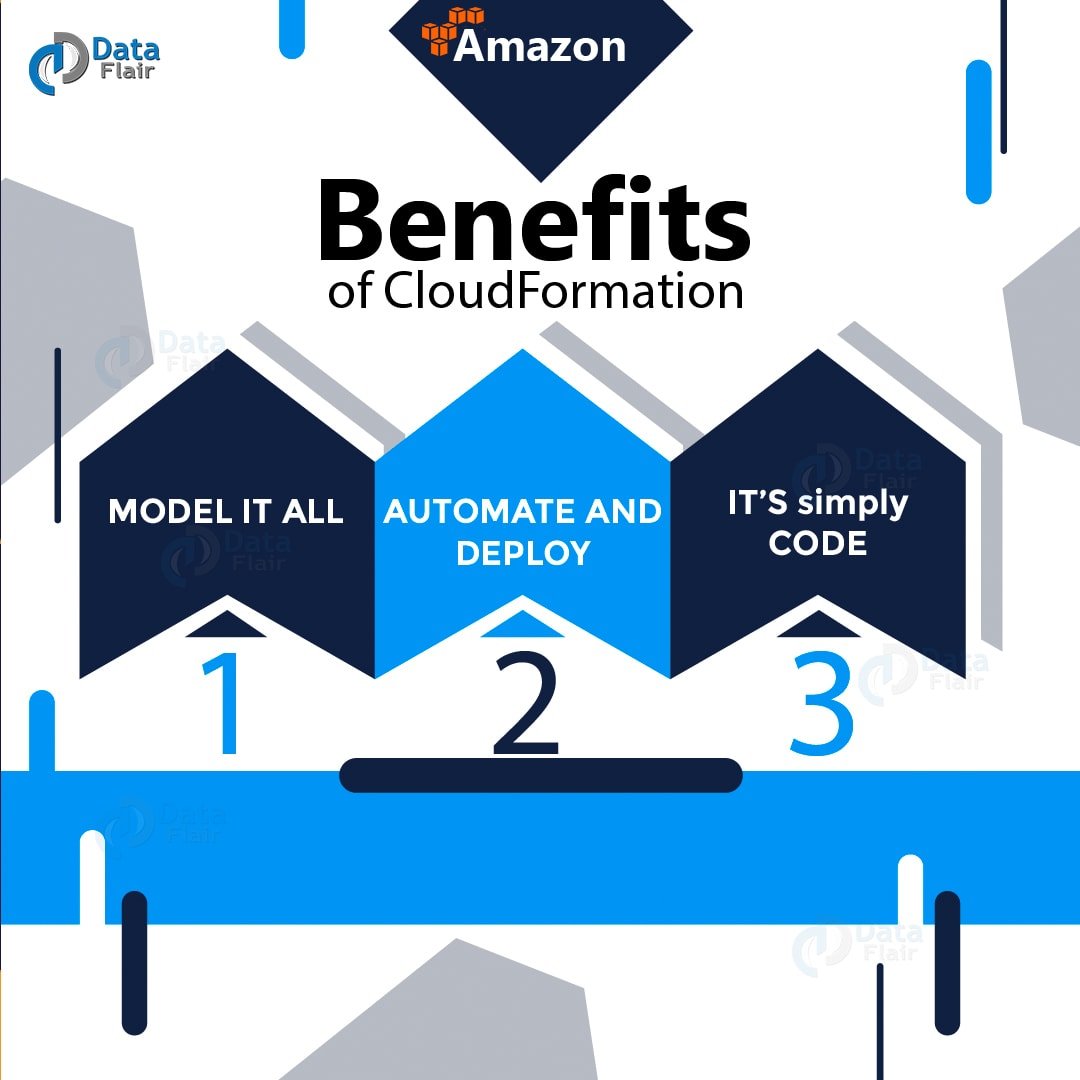Learn AWS CloudFormation – Working, Benefits, Features
Free AWS Course for AWS Certified Cloud Practitioner (CLF-C01) Start Now!!
In our last session, we discussed AWS SDK. Here, we will see what is AWS CloudFormation with its working. Moreover, we will learn the benefits and features of Amazon CloudFormation.
So, let’s start the AWS CloudFormation Tutorial.
What is Amazon CloudFormation?
AWS CloudFormation provisions and manages the stack of AWS resources based on templates created by the user. The user can manage anything such as a normal EC2 instance to a multitier multiregional application.
CloudFormation is used to define simple things such as Amazon VPS subnet as well as provisioning services and AWS Elastic Beanstalk.
It is easy to start with Amazon CloudFormation just by creating a template which serves as a file that defines the blueprint to define the configuration of all the AWs resources.
A sample pre-built template can also be selected from the AWS CloudFormation which it provides for the basic architecture. Such as a lamp stack which runs on Amazon EC2 and Amazon RDs.
Parameters can also select such as a number of an instance and instance types. After that, the AWS CloudFormation will configure the resource stack.
How Does CloudFormation Works?
- Code the infrastructure from the scratch with the CloudFormation template language it can be in either YAML or JSON format.
- Check the code locally and upload it to the AWS S3 bucket.
- Use AWs with the help of the browser console, command line tools or APIs to create a stack-based in the template code.
- AWS CloudFormation provisions and configures the stacks and the resources the user specifies on the template.
Do you know What is Amazon CloudFront and its Working?
Benefits of AWS CloudFormation
Following are the Amazon CloudFormation Benefits, let’s discuss them:
a. Model it all
AWS CloudFormation permits The user to model The user entire infrastructure during a document. This templet becomes the one supply of truth for The user infrastructure.
This helps The user to standardize infrastructure parts used across The user organization, facultative configuration compliance and quicker troubleshooting.
b. Automate & Deploy
Amazon CloudFormation provisions The user resources during a safe, while not having to perform manual actions or write custom scripts, repeatable manner, permitting The user to make and build The user infrastructure and applications.
CloudFormation takes care of decisive the proper operations to perform once managing The user stack and rolls back changes automatically if errors are detected.
Let’s read about AWS VPC (Virtual Private Cloud) in detail?
c. It’s Simply Code
Codifying the user infrastructure permits The user to treat The user infrastructure as simply code. The user will be able to author it with any code editor, check it into a version system, and review the files with team members before deploying into production.
Amazon CloudFormation Features
a. Authoring with JSON/YAML
AWS CloudFormation permits The user to model The user entire infrastructure during a document. The user will be able to use JSON or YAML to explain what AWS resources The user would like to form and put together.
If The user would like to style visually, The user will be able to use AWS CloudFormation Designer to assist The user start with AWS CloudFormation templates.
Let’s Explore the Benefits of Amazon Cloudsearch
b. Safety Controls
Amazon CloudFormation automates the provisioning and change of The user infrastructure in a safe and controlled manner. There are not any manual steps or controls which will cause errors.
The user will be able to use Rollback Triggers to specify the CloudWatch alarm that CloudFormation ought to monitor throughout the stack creation and update method. If any of the alarms are broken, AWS CloudFormation rolls back the whole stack operation to a previous deployed state.
c. Preview Changes to a User Environment
AWS CloudFormation modification Sets permit The user to preview however projected changes to a stack would possibly impact The user running resources. as an example, whether or not The user changes can delete or replace any important resources.
AWS CloudFormation makes the changes to The user stack solely once The user chooses to execute the modification Set.
d. Dependency Management
Amazon CloudFormation automatically manages dependencies between The user resources throughout stack management actions. {The user do|The user ar doing} not have to be compelled to worry concerning specifying the order during which resource are created, updated, or deleted.
AWS CloudFormation determines the proper sequence of actions to use for every resource once playing stack operations.
Have a Look at Amazon WorkMail & its Benefits
e. Cross Account and Cross-Region Management
AWS StackSets that enables The user to provision a typical set of AWS resources across multiple accounts and regions with one CloudFormation template. StackSets takes care and provides safely provisioning, updating to the best, or deleting stacks in multiple accounts and across various regions.
This provides an equivalent level of automation, repeatability, and dependability to stack management operations across regions and accounts.
f. Extensibility
Amazon CloudFormation allows The user to make custom extensions to The user stack template using AWS Lambda.
The user will be able to use Custom Resources, that is associate extensibility mechanism that permits The user to write down custom provisioning during a Lambda perform and have it trigger throughout a CloudFormation stack.
The user will be able to write custom provisioning logic for tasks like provisioning a 3rd party resource or trying up the most recent AMI IDs to be used in The user stacks.
So, this was all about Amazon CloudFormation Tutorial. Hope you like our explanation.
Conclusion
Hence, we studied the user can use AWS CloudFormation’s sample templates or produce the user own templates to explain the AWS resources. Amazon CloudFormation takes care of this for the user.
When the AWS resources are deployed, the user will be able to modify and update them during a controlled and predictable approach. In result applying version management to the user AWS infrastructure a similar approach, the user is doing along with The user package.
We work very hard to provide you quality material
Could you take 15 seconds and share your happy experience on Google







